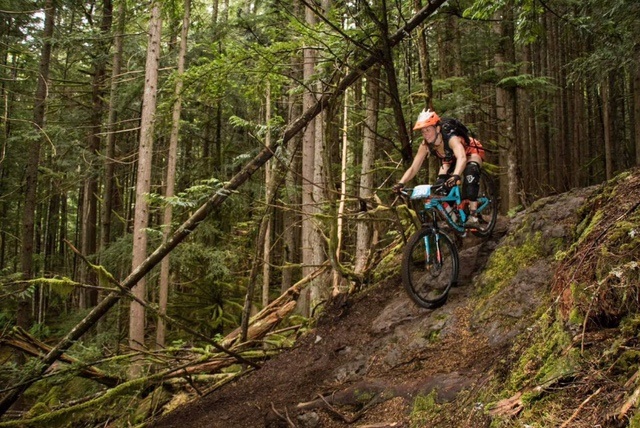
14 Aug 2017
Mountain biking
For ten days, from August 10th – August 20th, the exciting mountain bike event Crankworx in Whistler is on. Fast descents, amazing tricks and huge jumps are part of the spectacular event.
Mountain biking may not be everyone’s cup of tea, but it has been gaining popularity. The Mountain Bike Associations on the North Shore and in Squamish have gained many members over the years. And there are people and families outside of the associations that enjoy the sport on all different levels.
A few physiotherapists and staff members on the Aquatic Centre Physiotherapy team enjoy mountain biking in their spare time. Consequently, personal experience heightens their awareness of mountain biking conditions and injuries.
COMMON MOUNTAIN BIKING INJURIES
- Wrists and Hands:
You’re connected to your bike in three different places: your feet, your bum and your hands. Of the three, the hands and are the smallest and most delicate. The vibration and impact from the trial moves its way through the bike to your hands and can cause pain and discomfort. In particular, nerve compression and muscle fatigue are common and wearing gloves, lessening grip tension and changing your hand positions often can help both conditions.
- Knees:
Knee pain during and after riding is common. Having a professionally trained specialist in bike fitting adjust your riding position to prevent many of the problems before they begin. Pain around the kneecap and lateral knee predominate, but proper stretching after riding and using a sensible pre-season conditioning program reduces the likelihood of injury.
- Shoulders and neck:
Riding a mountain bike requires that you use your shoulders and upper body to make power and to position the bike where you need it. Many riders will experience neck, upper back and shoulder pain following long or more spirited rides. Try to make a conscious effort to relax your shoulders and draw your shoulder blades back and down. This will help reduce the muscle tightness and burning that can develop from the overuse of your upper back muscles.
Self-treatment: When you experience a trauma such as falling off your bike and sustain sprains, strains and bruises. Always keep in mind, to RICE (Rest, Ice, Compression, Elevation).
Do I need to go to the doctor? You should see a doctor if:
- You hit your head and experienced Loss of Consciousness, blurred vision, extreme dizziness, forgetfulness, etc
- You are unable to weight bear on affected limb – you will need imaging done to see if it is broken
- You have significant bleeding
How can a physiotherapist help you after suffering an injury?
- Physiotherapy involves a rehabilitation treatment plan augmented with a home exercise program, education, modalities, hands-on therapy, needling, and corrective taping.
- A physiotherapist can help you regain strength and mobility. Most importantly, they can provide proper education about your body and injury.
PREVENTION
Warm up properly
– 10-15 min of mild intensity activity at the start of the ride
Stretch and strengthen your muscles
– Our muscles work in unison with each other, so balance is key
Know your body
– Everyone has muscles they know that are tight, so focus on those specific muscles
– Common problem areas include the hip, knee, neck and upper back
Use your head
– Wear proper equipment
– Know your limits
Mountain biking is a thrilling activity. Although, with thrill comes risk. Have fun while riding, but be conscious and careful of your body. If by bad luck you happen to sustain an injury while mountain biking, consult a physiotherapist if appropriate and confidently work your way back onto the trails!

